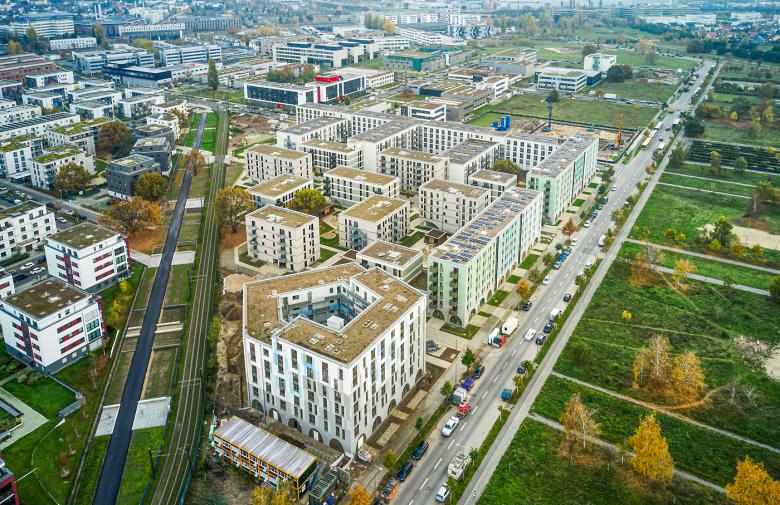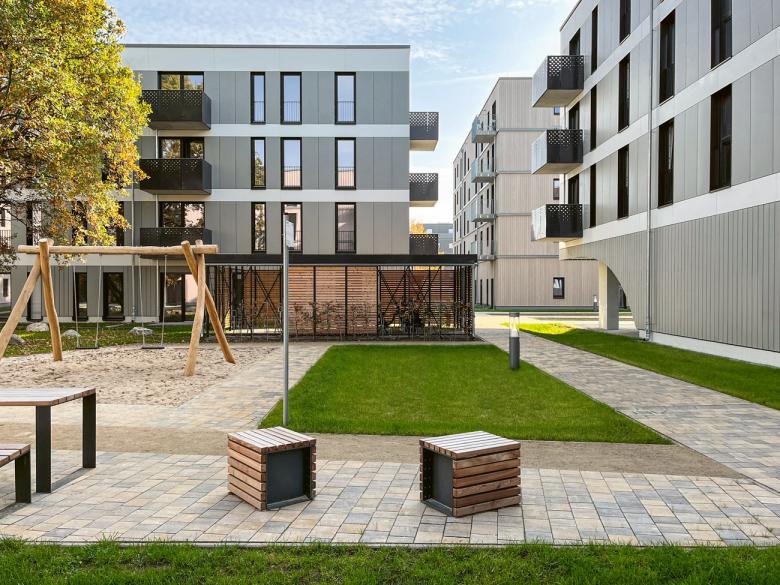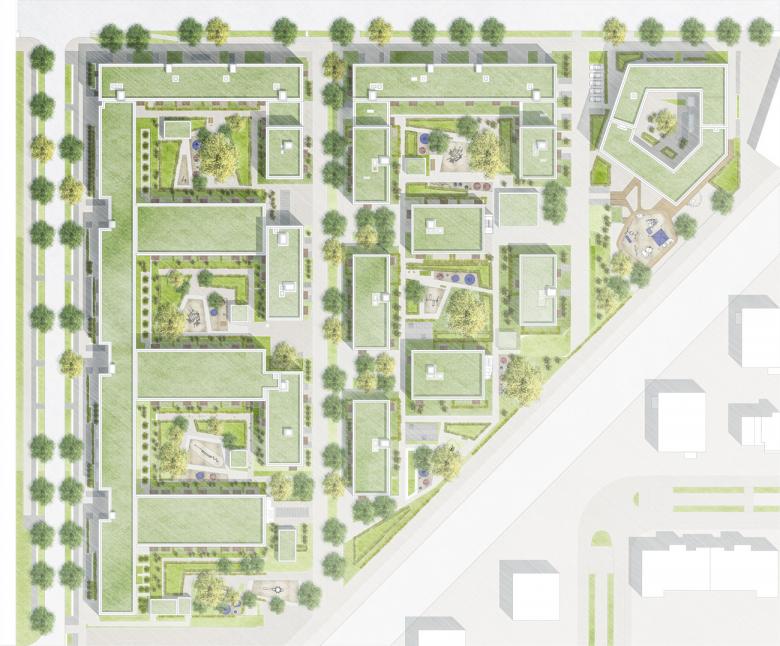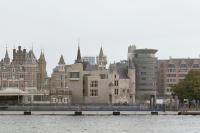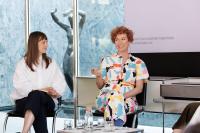Living Quarter Hermann-Dorner-Allee Berlin
Berlin-Adlershof, Germany
New affordable housing is today’s elusive prize – and the municipal housing association Howoge Wohnungsbaugesellschaft mbH has gladly taken on the challenge. One possible answer is the design that blocher partners created for the Diringer & Scheidel Bauunternehmung GmbH & Co. KG as general contractor: The »Living on Campus« project for affordable housing is rising on a site of almost 27,000 square metres, at the Berlin-Adlershof science and technology park.
The intention was to build a sophisticated ensemble of buildings with open-space planning, to form an attractive yet affordable architectural language using modular, standardised construction. The designers wanted to create a holistic neighbourhood that would appeal to various populations in terms of age and income, guaranteeing a lively mix of residents. Only a few pre-defined modules and a limited range of material are to be employed; but varied combinations will yield diverse facades with individual character. The design’s motto is, »Making quality affordable.« So the architects have optimised the structures down to the smallest detail. The result is an ensemble that will offer a variety of public spaces for encounters and communication.
When it comes to urban identity, the new city quarter along Hermann-Dorner-Allee/Karl-Ziegler-Straße is related to both the research campus and the nature park. The closed rows along Karl-Ziegler-Straße reflect the commercial areas across the street. A half-open pergola blocks noise, while the living spaces in micro-apartments face the interior courtyard.
The ground floor forms striking arches that are reminiscent of the historic Berlin S-Bahn railway arcades. But on the inside, the ensemble of buildings gives a playful and open impression. Scattered apartment blocks with wooden façades and spacious gardens create a visual relationship to the nature park. Each building type has its own design concept – from coloured plaster surfaces to unadorned wooden façades. The individual structures are staggered, forming six public courtyards with benches, a playground and recreation areas. Depending on need, the flexible commercial space can be combined to form larger areas – or subdivided into apartments. The 500-square-meter day care center with generous garden can accommodate 75 children.
In addition to offering affordable rents and top-quality urban design, the new city quarter is committed to modern energy technology. Atop each building is a photovoltaic system that produces low-cost, CO2-free electricity. Decentralized home stations for preparation of heat and hot water help keep system temperatures low, ensuring further energy savings. This also helps save space, since the system requires fewer pipes: It frees up approximately 120 square meters for other uses, such as living space, or storage of prams, walkers, or bicycles.
- Architects
- blocher partners
- Location
- Hermann-Dorner-Allee, 12489 Berlin-Adlershof, Germany
- Year
- 2022

